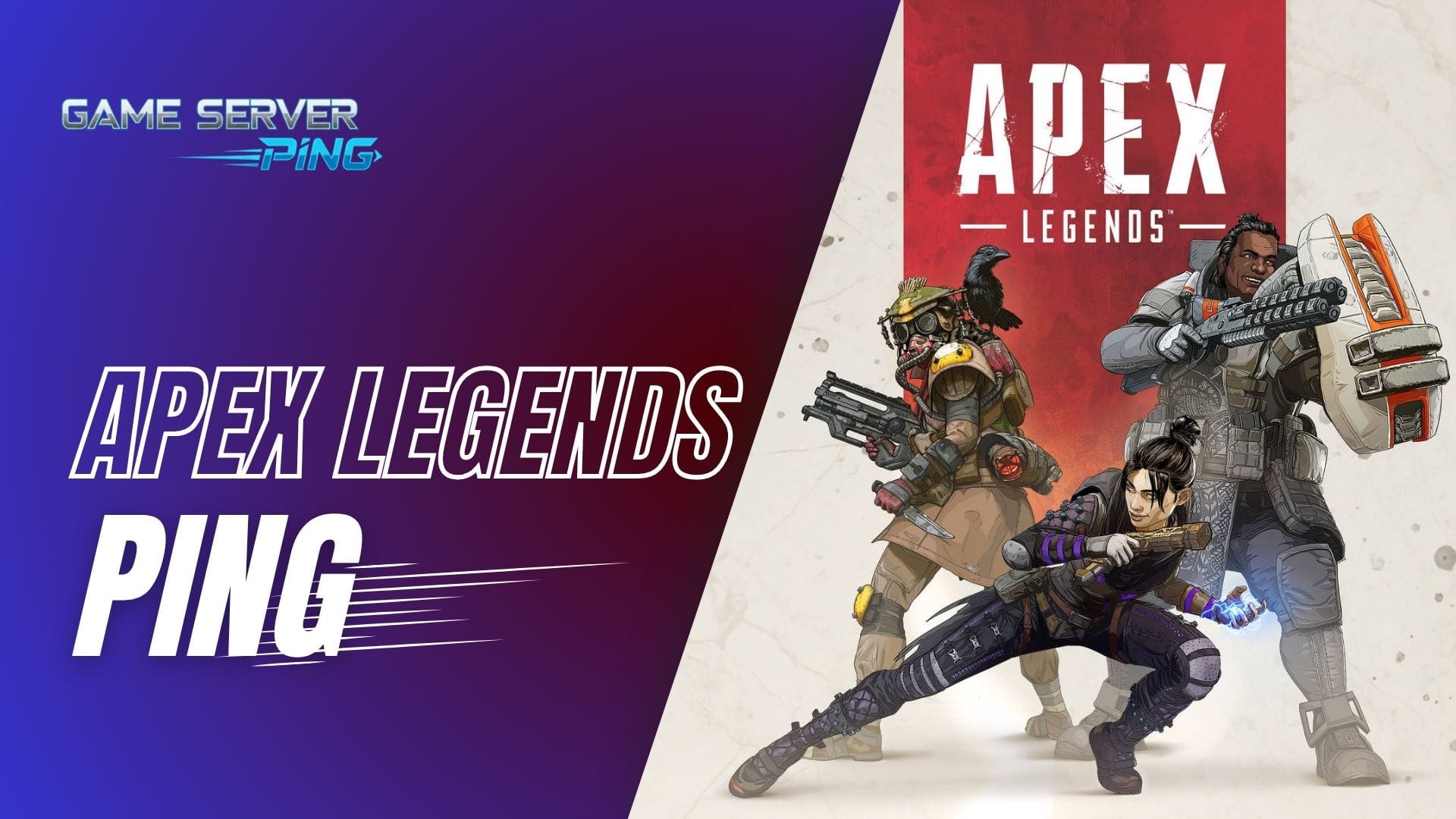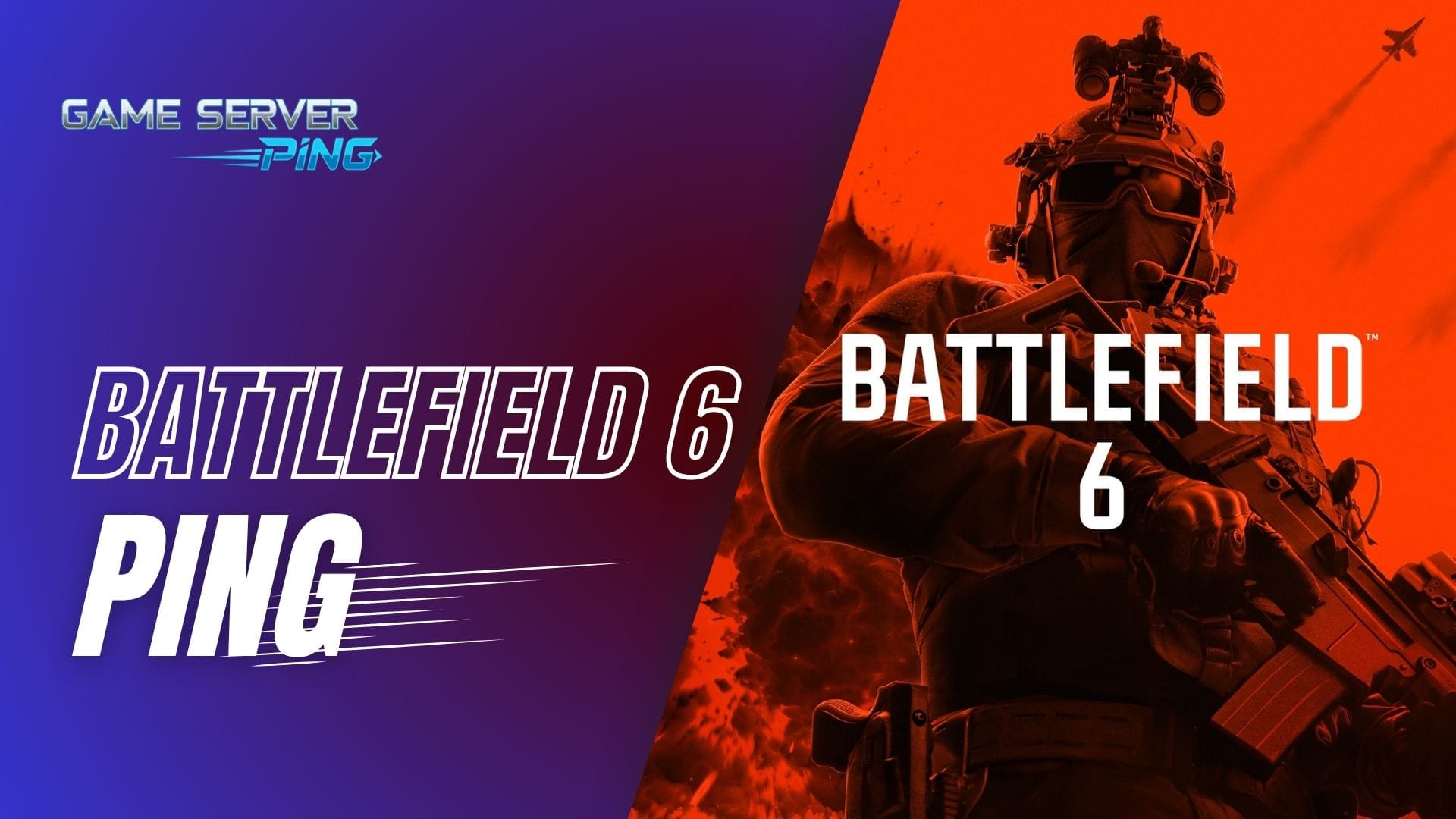Now Reading: Apex Legends Ping Test Live – Check 21 Server Regions
- 01
Apex Legends Ping Test Live – Check 21 Server Regions

Apex Legends Ping Test Live – Check 21 Server Regions
What This Apex Legends Ping Tool Is All About
This Apex Legends Live Ping Test Tool is built for players who want to understand their network quality before dropping into the arena. Instead of discovering lag or connection issues mid-match, this browser-based tool delivers instant, real-time ping results for all major Apex Legends servers worldwide.
It automatically checks your latency across multiple regions — including North America, Europe, Asia, the Middle East, South America, Africa, and Oceania — giving you a clear view of where your connection performs best. With just one click, you’ll see average ping, jitter, and live response times, helping you identify the most stable and lag-free server for your gameplay.
Before checking your Apex Legends ping, it’s smart to make sure your internet speed and ISP performance are reliable. You can use the Internet Speed Test for Online Gaming or explore the Gaming ISP Checker Tool to see if your connection is optimized for low latency gaming.
The tool mirrors real-world network behavior from globally distributed data centers, ensuring the results closely match what you’ll experience in-game — whether you’re connecting from NA East (Virginia), EU West (London), or Asia (Tokyo).
Why Ping Testing Matters for Competitive Gameplay
In a fast-paced shooter like Apex Legends, even a small delay can make a huge difference. A high ping means your inputs — shooting, moving, or healing — take longer to register on the server. This delay often leads to missed shots, desync, or frustrating lag spikes during fights.
By using a live ping checker before entering matchmaking, players can choose the server with the lowest latency and highest stability. This not only reduces lag but also improves precision and movement responsiveness — critical for ranked matches and tournaments where every millisecond counts.
For those facing recurring problems like “Apex Legends high ping on all servers”, “Apex Legends ping spikes”, or “bad connection icons”, this tool helps pinpoint the source of the issue. It clearly shows whether your lag is due to your local internet connection or an overloaded regional server, allowing you to make smarter adjustments before playing.
Supported Platforms: PC, Xbox, and PlayStation Compatibility Overview
This Apex Legends Ping Checker works seamlessly on PC, Xbox, and PlayStation consoles — without any installation or third-party software. It’s fully browser-based, meaning you can test your connection directly from your desktop, laptop, or even a mobile device.
Whether you’re on Windows, macOS, Xbox Series X/S, PS4, or PS5, the tool accurately measures your ping to each Apex Legends server region. Players on Wi-Fi, wired Ethernet, or cloud gaming setups can all use it to ensure a smooth, responsive online experience.
Because of its lightweight, efficient design, the tool delivers fast, real-time latency tracking without overloading your connection. This makes it an essential pre-game check for console and PC gamers who want to avoid laggy servers and enjoy consistent gameplay performance.
Check Apex Legends Live Server Ping Test
Apex Legends Live Ping Test
Test your Apex Legends ping online instantly with this free live ping test tool for PC, Xbox, and PlayStation players. Check your real-time server latency across major regions like North America, Europe, Asia, South America, the Middle East, and Oceania to enjoy lag-free gameplay, stable connections, and optimized performance in every match.
 NA East (Virginia)
NA East (Virginia) NA East (Ohio)
NA East (Ohio) NA West (California)
NA West (California) NA West (Oregon)
NA West (Oregon) EU West (Dublin)
EU West (Dublin) EU West (London)
EU West (London) EU West (Paris)
EU West (Paris) EU Central (Frankfurt)
EU Central (Frankfurt) EU North (Stockholm)
EU North (Stockholm) Africa (Cape Town)
Africa (Cape Town) Middle East (Bahrain)
Middle East (Bahrain) Middle East (UAE)
Middle East (UAE) India (Mumbai)
India (Mumbai) Asia (Tokyo)
Asia (Tokyo) Asia (Seoul)
Asia (Seoul) Asia (Osaka)
Asia (Osaka) SEA (Singapore)
SEA (Singapore) Oceania (Sydney)
Oceania (Sydney) SEA (Jakarta)
SEA (Jakarta) South America (São Paulo)
South America (São Paulo) Canada (Montreal)
Canada (Montreal)
Best Ping for Apex Legends Online
When it comes to Apex Legends, ping plays a huge role in how smooth and responsive your gameplay feels. Since it’s a fast-paced battle royale where every second counts, maintaining a low and stable ping can make the difference between winning and losing a gunfight.
What Is a Good Ping in Apex Legends?
- 0–30 ms (Excellent): Ideal for competitive play. You’ll experience near-instant response time with no noticeable delay between your actions and what happens in-game.
- 30–60 ms (Good): Still very playable and smooth. You may notice very slight input delays, but it won’t affect your gameplay much.
- 60–100 ms (Average): You’ll start to feel mild lag, especially in intense fights. Movement, shooting, or ability usage may feel slightly delayed.
- 100–150 ms (High): Noticeable lag and input delay. It becomes harder to track enemies or react quickly in close combat.
- 150 ms and above (Poor): The game becomes frustrating to play. You might experience rubberbanding, delayed shots, or inconsistent movement.
What Ping Do Most Apex Legends Pros Aim For?
Professional and competitive Apex Legends players typically aim for a ping below 50 ms. This ensures minimal latency, faster reaction times, and better accuracy when tracking fast-moving opponents.
How to Get the Best Ping in Apex Legends
- Use the Closest Server Region: Always connect to the nearest available region from your location. Our Apex Legends Ping Test Tool helps you find the fastest and most stable server before you start your match.
- Prefer a Wired Connection: Ethernet cables offer more stability than Wi-Fi and help reduce packet loss or signal fluctuations.
- Close Background Apps: Stop downloads, streaming, or updates that might be consuming bandwidth while gaming.
- Restart Your Router: A quick router restart can sometimes improve network routes and reduce latency.
- Avoid Peak Internet Hours: When possible, play during off-peak times to prevent congestion from other users on your network.
Check Fortnite Ping Test Live
How the Apex Legends Live Ping Test Works
Simple Click, Instant Results — The “Check Apex Legends Ping Test” Button Explained
The Apex Legends Live Ping Test Tool is built to deliver quick and accurate latency readings with just a single click. Once you hit the “Check Apex Legends Ping Test” button, the tool immediately begins testing your connection across multiple regional servers used by Apex Legends. It sends lightweight connection requests to these servers and records how long it takes for a response to return — giving you your real-time ping value in milliseconds (ms).
This instant testing method makes it easy for players to check which region offers the lowest ping before launching into a game. Whether you’re preparing for a ranked session or just want smoother gameplay, the tool helps you identify which server gives you the fastest and most stable connection. It’s perfect for users facing Apex Legends high ping issues, Apex Legends lag spikes, or Apex Legends data center delays, offering immediate insight without any setup or downloads.
Behind the Interface: Real-Time Server Response Tracking
What makes this Apex Legends ping checker powerful is its ability to show live updates as your connection interacts with multiple regions. Each listed server—like those representing North America, Europe, Asia, and Oceania—responds individually, allowing you to compare the response times between regions.
Once the connection data is received, the tool instantly updates each server’s ping result on your screen, showing which region performs best for your network. This helps players visualize how well their connection holds up in different parts of the world without needing to enter the game itself.
The Apex Legends ping results you see are accurate and reflect your real network condition at that moment. Since the data refreshes continuously, you can keep the tool running while monitoring any fluctuations that may occur due to internet instability, congestion, or ISP routing.
Automatic Refresh and Continuous Ping Monitoring
Unlike one-time ping testers, this tool performs continuous ping monitoring to give players ongoing updates every few seconds. After initiating the test, the system automatically refreshes the connection data at short intervals, ensuring that your ping results remain current.
This ongoing cycle is especially useful for players experiencing Apex Legends high ping on all servers or random ping spikes. By keeping the tool open, you can monitor how your connection behaves over time—detecting patterns such as evening slowdowns or sudden packet drops.
The real-time refresh feature also helps identify temporary connection issues or routing problems that may not be visible with a single test. It allows you to pinpoint whether the high ping is a brief fluctuation or a persistent issue needing attention.
How the Tool Measures Average Latency and Jitter Without Overloading Your Connection
The Apex Legends ping tester calculates both average latency and jitter based on multiple readings over time. Latency shows how long it takes for your data to travel between your device and the game servers, while jitter measures the consistency of that latency. A stable connection will show low jitter, meaning your ping remains steady throughout gameplay.
The tool achieves this by running lightweight connection checks that don’t consume extra bandwidth or interfere with your ongoing internet activities. It keeps the process efficient, ensuring accurate data without slowing your network. Players can easily read values such as “Avg: 45ms · Jitter: 3ms,” which provides a quick overview of both performance and stability.
These insights are valuable for diagnosing Apex Legends bad ping, Apex Legends lag, or Apex Legends unstable connection issues. When your jitter levels are low, it’s a clear sign that your network is ready for smooth, delay-free gameplay.
Understanding the Color-Coded Ping Indicators (Green, Yellow, Orange, Red)
To make results easy to understand at a glance, the Apex Legends ping test tool uses a color-coded indicator system for every server. Each color represents your network quality:
- Green – Excellent connection (low ping, stable performance)
- Yellow – Moderate connection (slightly higher ping, still playable)
- Orange – Noticeable delay (occasional lag or stutter)
- Red – Poor connection (high latency, unstable gameplay)
This simple visual approach helps players quickly determine which region is best suited for them. For example, if Apex Legends EU ping shows green while Apex Legends Asia ping appears red, you instantly know which data center to prioritize for matchmaking.
The color-coded results also make it easier to identify when your network experiences fluctuations, like Apex Legends ping spikes or sudden lag bursts. By keeping an eye on these indicators, you can consistently select the best-performing region for smoother online matches.
Global Server Infrastructure Used by the Tool
How the Apex Legends Ping Tool Tests Worldwide Server Regions
The Apex Legends Ping Test Tool is built to analyze your internet connection speed and latency across multiple global data centers. These servers are distributed strategically across major regions to help players identify the most responsive connection, no matter where they are located.
Even if your region doesn’t have a dedicated Apex Legends server, the tool automatically detects and suggests the next closest data center with the lowest ping and stable response time. This ensures that players worldwide — whether from North America, Europe, Asia, or the Middle East — always get an optimized gameplay experience with minimal lag and better matchmaking stability.
North America East – Virginia & Ohio
For players located on the east coast of the United States or nearby regions such as Canada’s eastern provinces and parts of South America, the Virginia and Ohio data centers generally provide the most stable and low-latency connections.
If you’re from Europe or West Africa, and your ping to European servers is slightly unstable, the North America East region can sometimes deliver smoother connectivity depending on your ISP routing.
North America West – California & Oregon
Players from the western U.S., western Canada, or Mexico will typically experience the best results on the California or Oregon servers. These locations are ideal for those in the Pacific region or parts of Asia where west-coast routing offers lower ping compared to local nodes.
If you live in Hawaii or nearby Pacific islands, this region is often your best alternative for consistent performance.
Europe West – Dublin, London, and Paris
Players in Western Europe, including the UK, France, Spain, Ireland, and Portugal, will see the strongest results on the London, Dublin, or Paris data centers.
If you’re connecting from North Africa or parts of the Middle East, and your regional servers show high ping, Europe West is generally the most reliable backup region for stable gameplay.
Europe Central & North – Frankfurt and Stockholm
For players in Germany, Poland, the Netherlands, Denmark, and Scandinavia, the Frankfurt and Stockholm centers are known for their low latency and consistent uptime.
If you’re in Eastern Europe or Russia, these servers are often faster and more stable than Western or Asian routes.
Asia Pacific – Tokyo, Seoul, Osaka, Singapore, and Jakarta
Gamers across East and Southeast Asia, including Japan, South Korea, Indonesia, Malaysia, Thailand, and the Philippines, can rely on these data centers for ultra-fast responses.
If you’re in India, Pakistan, or the Middle East, and your local ping is unstable, Singapore or Tokyo usually provide the most reliable alternative with moderate latency and steady packet delivery.
Oceania – Sydney
Players in Australia, New Zealand, and nearby Pacific regions will find Sydney as the best performing and most stable server.
For those in Southeast Asia or South Asia where ping to regional servers fluctuates, Sydney often provides a solid secondary option with consistent response times.
Middle East – Bahrain and UAE
Gamers in the Middle East, including Saudi Arabia, Kuwait, Qatar, and Oman, will experience great stability on Bahrain or UAE data centers.
If you’re connecting from North Africa, Turkey, or Western India, these locations usually act as the best crossover points, offering balanced latency between Europe and Asia.
South America – São Paulo
For players in Brazil, Argentina, Chile, and neighboring countries, São Paulo serves as the central hub for the lowest ping.
If you’re from the Caribbean or Central America, and North American servers show higher latency, São Paulo might still deliver smoother results depending on your ISP routing.
Canada – Montreal
Gamers located in Eastern Canada, Northern U.S. states, and even parts of Western Europe may find Montreal servers to deliver consistently low latency.
If you’re from Greenland or Northern Europe, this can be a surprisingly effective alternative region due to its direct routing to multiple transatlantic networks.
Common Apex Legends Ping-Related Search Intents Covered
“Apex Legends High Ping on All Servers” – Diagnosing the Root Cause
If you’re experiencing high ping on all Apex Legends servers, it usually points to an issue outside the game — most often related to your internet connection, ISP routing, or background network usage. The Apex Legends Ping Test Tool helps you identify whether the problem is localized or widespread by testing your connection across multiple regional data centers in real time.
If every server shows high latency (for example, above 150 ms), it’s a sign that your overall internet connection may be unstable or throttled. In that case, try:
- Restarting your router or switching from Wi-Fi to a wired Ethernet connection.
- Closing background downloads or streaming services.
- Checking with your ISP for possible maintenance or throttling during peak hours.
This test helps eliminate guesswork — confirming if the issue is with your ISP routing or specific server regions.
“Apex Legends Bad Ping” – Quick Visual Clarity from Test Results
When players search for “Apex Legends bad ping,” they’re usually looking for quick proof that their in-game lag isn’t just “in their head.” The ping tool’s color-coded display (green, yellow, orange, red) gives an instant visual cue of your network quality.
- Green (Excellent): 0–60 ms — smooth and competitive play.
- Yellow (Moderate): 60–100 ms — still playable, but you may notice minor input delays.
- Orange (High): 100–180 ms — visible lag, slower hit registration.
- Red (Poor): 180+ ms — unstable or delayed gameplay experience.
By using the test before logging in, players can confirm why they’re getting poor ping and switch to a region that offers a more stable experience.
“Apex Legends Why Is My Ping So High” – Real-Time Confirmation Through Testing
This is one of the most searched questions among players — and the ping tool provides a straightforward, data-backed answer. When you run the test, it shows real-time ping values for every major region. If your nearest data center shows higher latency than expected, the cause could be:
- Temporary network congestion or maintenance.
- Distance from your ISP’s routing hub.
- Poor wireless signal strength or interference.
By comparing nearby data centers, the tool helps you confirm whether your high ping is a temporary issue or part of a broader routing problem. It also lets you identify an alternate region that may perform better until your local connection stabilizes.
Tips for Interpreting Your Ping Test Results
What Counts as a “Stable” Server Connection
A stable server connection isn’t just about having low ping — it’s about consistent latency throughout your gameplay. A connection that stays around the same ping value (for example, 60–65 ms) is more reliable than one that fluctuates between 40 and 180 ms.
The Apex Legends Ping Tool measures this consistency by calculating average, minimum, and maximum ping. The smaller the gap between your minimum and maximum latency, the more stable your connection is.
Stable connections help ensure that:
- Your movements and shots register at the right time.
- Hit detection remains accurate.
- You avoid lag spikes during combat.
If your test results show frequent fluctuations, consider switching to a more stable data center even if its average ping is slightly higher — reliability often matters more than speed in competitive play.
When to Switch Regions for Better Results
Sometimes, your default region might not offer the best performance due to temporary server load, ISP routing issues, or regional congestion. In such cases, switching to a nearby or alternative region can provide significantly smoother gameplay.
Here’s how to decide:
- If your ping suddenly increases in your local region, test neighboring data centers.
- Players in Asia can often get better results from Singapore or Tokyo.
- European players may find Frankfurt or London servers more consistent.
- Middle Eastern players might experience better routing to Bahrain or Europe West.
- South American players should check São Paulo and North America East for alternate options.
The tool helps visualize these results in real time so you can quickly identify the region offering the best stability and lowest ping at any given moment.
The Meaning Behind Jitter and Stability Labels in the Tool
While ping measures how fast your data travels, jitter measures how consistent that speed is. High jitter means your ping time varies from one second to the next — leading to random lag spikes or rubber-banding.
In the Apex Legends Ping Test Tool, you’ll often see stability labels such as:
- Stable: Low jitter, minimal variation — ideal for ranked or pro play.
- Moderate: Some fluctuations — generally fine for casual gaming.
- Unstable: Frequent ping changes — expect noticeable lag or delays.
If your jitter is consistently above 20–30 ms, you may face inconsistent hit registration or delayed feedback. Try testing again using a wired connection, closing background apps, or choosing another data center with lower variability.
Troubleshooting High Ping and Server Delays
How to Double-Check Network Conditions
When your Apex Legends Ping Test results show unusually high latency, the first step is to verify whether the issue is coming from your local network or from the route between you and the data center. Start by checking the basics:
- Restart your modem or router to clear temporary cache or DNS errors.
- Switch from Wi-Fi to Ethernet for a more stable and direct connection.
- Close background applications that may be consuming bandwidth, such as streaming platforms, downloads, or cloud syncs.
- Run a general internet speed test to confirm if your upload and download speeds match your ISP plan.
If your speed test results are normal but the Apex Legends Ping Tool still shows high latency to certain regions, it could indicate temporary congestion or routing inefficiency between your ISP and that specific data center. In such cases, testing alternative regions is the quickest fix.
Restarting the Tool for Fresh Server Polling
Sometimes, a simple refresh or restart of the ping test tool can resolve inconsistent readings. When the tool is first launched, it polls multiple regional servers simultaneously — but if your internet fluctuates or drops mid-test, some pings may not return accurate data.
To get the most precise results:
- Refresh the page and run the test again after a few minutes.
- Avoid switching browser tabs or minimizing the window during the test.
- Run the test during off-peak hours (early morning or late night) for cleaner results.
Each restart triggers a fresh set of ping requests, ensuring that your results reflect your current, real-time network status rather than a temporary spike or drop from a previous session.
When “Unreachable” Means Temporary Outage or Blocked Route
If the tool shows a server as “Unreachable” or fails to display a ping value, it doesn’t always mean that the data center is offline. In most cases, it’s due to one of the following reasons:
- Temporary maintenance or downtime on the server side.
- ISP-level routing block that prevents a successful ping request.
- Firewall restrictions or VPN interference on your local connection.
- Regional restrictions where certain data centers may not respond to ICMP requests.
You can confirm whether it’s temporary by re-running the test after a few minutes or testing from a different network connection (like mobile data or another ISP). If the server remains unreachable across multiple attempts, it likely indicates a regional routing block — not an issue with your device.
Testing Multiple Times for Consistent Accuracy
For the most reliable and consistent results, it’s recommended to run the Apex Legends Ping Test multiple times throughout the day. Network traffic conditions constantly change — your connection at 3 PM may perform differently than at 11 PM due to ISP load or regional demand.
Here’s how to ensure testing accuracy:
- Perform at least two to three tests at different times to compare results.
- Average your ping values across the tests to find your true, stable latency.
- Keep note of any regions that fluctuate significantly — it helps identify unstable routes.
By comparing repeated tests, you can identify patterns, track improvements, and make smarter choices when selecting your Apex Legends server region for consistent gameplay.
Apex Legends Server Insights and Real-World Correlation
How Tool Results Compare with In-Game Ping
While the Apex Legends Ping Test Tool provides accurate, real-time measurements of your connection to regional data centers, it’s important to understand that your in-game ping may slightly differ from what you see in the test results. This variation occurs because the in-game ping isn’t just about raw latency — it also reflects the entire gameplay environment, including your graphics settings, system performance, network load, and even EA’s matchmaking routing at that moment.
The tool measures direct response time between your device and the regional endpoint, while the in-game ping includes additional layers such as:
- Game engine processing and rendering time.
- Server synchronization with other connected players.
- Data packet encryption and game-specific protocols.
So, if the tool shows a ping of 70ms but the in-game indicator reads 85ms, that’s completely normal. What matters most is the consistency of latency across multiple regions — not just the single number you see.
Common Differences Between Game UI and Web Ping Tests
In many cases, players notice that their in-game ping and web ping test values aren’t identical. This difference stems from how each system measures and processes data:
- Game UI ping reflects total delay after data passes through the game’s matchmaking servers, voice chat, packet handling, and rendering pipelines.
- Web ping tests like this one focus purely on network latency, without including in-game elements such as textures, animations, or real-time synchronization overhead.
- Your system performance — GPU load, CPU spikes, or even background software — can also impact what the in-game interface displays.
Therefore, the Apex Legends Ping Checker acts as a diagnostic tool to measure your true connection quality before entering the match. It helps you identify the best region and minimize in-game lag, even if the displayed number in the game’s interface is slightly higher due to additional processing.
Using This Tool to Plan Multiplayer Sessions with Friends
One of the most practical uses of the Apex Legends Ping Test Tool is for coordinating multiplayer sessions with friends across different regions. If you and your squad are spread across continents — say, one player in Europe and another in North America — this tool helps you find the most balanced server region with the lowest average latency for everyone.
Here’s how players often use it:
- Each teammate runs the ping test from their location.
- You compare which region offers the lowest combined average ping.
- Choose that region when forming your squad or starting matchmaking.
This approach ensures smoother communication, fewer connection drops, and more balanced performance during matches. It’s especially useful when you’re playing cross-region ranked games or participating in scrims and tournaments.
By planning based on data-driven insights, you can ensure that everyone in your squad enjoys stable, fair, and low-latency gameplay, regardless of where they’re connecting from.
Is this ping test tool official from Apex Legends?
No, this tool is not an official product of Apex Legends or Respawn Entertainment. It’s an independent web-based utility designed to help players check real-time latency to the same type of servers used by the game.
How often are the ping results updated?
Ping readings are updated live each time you run the test. You can refresh or restart the tool anytime to get the latest results for all available servers.
Can console players (PS5, Xbox) use this tool?
Yes. The ping test runs in your browser, so you can use it from any device — console, PC, or mobile — to get an idea of your connection performance before logging into the game.
Does the tool show the same ping I get inside the game?
Not exactly. The results are very close, but your in-game ping may differ slightly because the actual gameplay connection also depends on factors like graphics load, background apps, and your platform’s network configuration.
How accurate are the jitter readings?
Jitter values are highly reliable and reflect how stable your connection is during the test. High jitter means your ping fluctuates frequently — something that can cause lag or rubberbanding during gameplay.
What server region is best for my location
The best region is typically the one with the lowest ping and highest stability score. However, if you’re far from a data center, try nearby regions — sometimes a neighboring location may provide smoother performance due to cleaner network routes.
Can this tool help fix my high ping?
The tool itself doesn’t change or fix your ping, but it helps you identify the best-performing server and diagnose whether the issue is on your end or the server’s. You can then adjust your region settings in-game for better results.
Are these Amazon servers the same used by Apex Legends?
The test connects to data centers that operate on infrastructure similar to what Apex Legends uses, allowing you to see realistic latency results that closely reflect in-game conditions.











